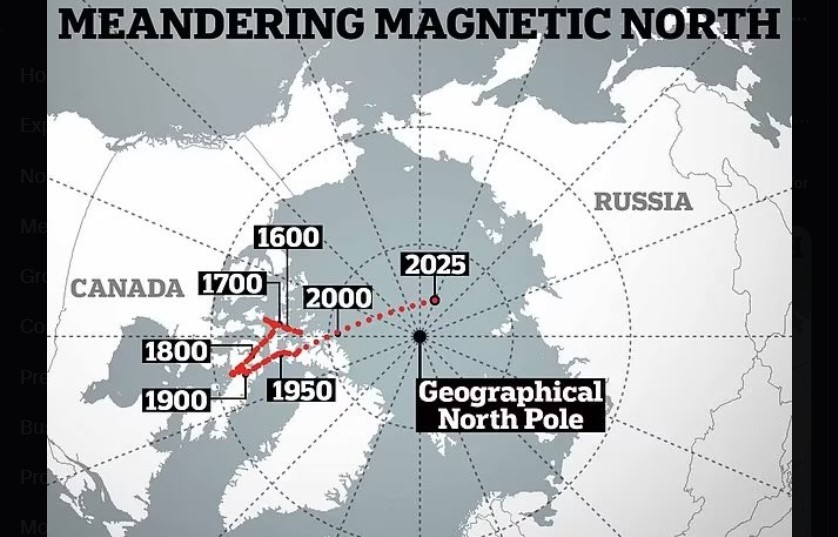
In a significant update for navigation systems, scientists have announced that Earth's magnetic north pole is shifting toward Russia.
The magnetic north, which is different from the geographic North Pole, has been moving steadily in recent years, and this latest model update reveals that the pole is now closer to Siberia than it was five years ago.
Magnetic North Pole's Unpredictable Movements Affect GPS Navigation
Unlike the fixed geographic North Pole, the magnetic north pole is determined by the Earth's magnetic field, which is in constant motion.
This magnetic field, generated by the Earth's core, can shift unpredictably. At times, the magnetic north has sped up, while at other times it has slowed down, but scientists still do not have a clear explanation for these unusual changes.
For years, global positioning systems (GPS), which are crucial for navigation in planes, ships, and smartphones, have relied on the World Magnetic Model (WMM), Economic Times reported.
This model tracks the position of the magnetic north and helps predict future movement based on past trends.
Since its creation in 1990, the WMM has been updated every five years to ensure accurate GPS measurements.
Magnetic North Pole Drifting Toward Russia: What the Latest Update Shows
The latest update, released on December 17, reveals the pole's new position and confirms the accuracy of previous predictions.
"The more you wait to update the model, the larger the error becomes," said Dr. Arnaud Chulliat, a senior scientist at the University of Colorado, Boulder.
According to CNN, with this update, the model's predictions for where the magnetic north pole would end up by 2025 were verified, showing the importance of these regular updates.
While the pole's drift towards Russia has been steady, scientists expect this movement to slow down in the coming years.
However, there's uncertainty about how long this slowdown will last, and the magnetic field could change its behavior once again. In the past, the Earth's magnetic field has even flipped, reversing the north and south magnetic poles.
This flip, which can take thousands of years to complete, could have major effects on animals that rely on the magnetic field for migration, as well as on satellite communication and navigation systems.
© 2025 NatureWorldNews.com All rights reserved. Do not reproduce without permission.





